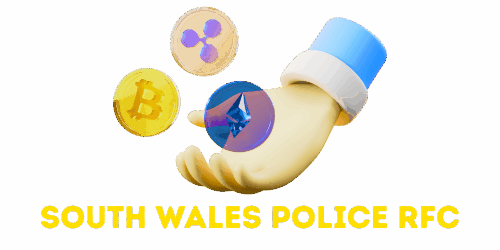In a world filled with distractions and endless possibilities, reaching goals can feel like a daunting task. Yet, mastering effective goal-reaching methods can transform aspirations into reality. From personal development to professional achievements, the right strategies can provide clarity and direction, making the journey smoother and more rewarding.
Whether it’s breaking down large objectives into manageable steps or harnessing the power of visualization, various techniques can empower individuals to stay focused and motivated. By understanding these methods, anyone can unlock their potential and turn dreams into tangible results.
Table of Contents
ToggleUnderstanding Goal-Reaching Methods
Goal-reaching methods encompass structured techniques that guide individuals toward achieving their objectives. These strategies help clarify aspirations, maintain focus, and foster motivation.
Definition of Goal-Reaching Methods
Goal-reaching methods consist of various strategies and approaches used to identify, plan, and accomplish specific objectives. Examples include SMART goals, which stand for Specific, Measurable, Achievable, Relevant, and Time-bound. Other techniques involve breaking down larger goals into smaller, actionable tasks, thereby ensuring a clear roadmap toward success.
Importance of Goal-Reaching Methods
Goal-reaching methods play a vital role in personal and professional development. They provide a framework for effectively navigating challenges, which enhances motivation and accountability. Structured approaches enable individuals to monitor progress, adapt techniques as necessary, and stay committed to their objectives. Research indicates that individuals who utilize dedicated goal-setting methods greatly improve their chances of success, leading to higher satisfaction and achievement rates.
Popular Goal-Reaching Methods

Effective goal-reaching methods facilitate clarity and progress, offering structured paths to success. Below are several widely recognized techniques that enhance goal achievement.
SMART Goals
SMART goals represent a framework that ensures objectives are Specific, Measurable, Achievable, Relevant, and Time-bound. This method promotes precise clarity in what one aims to achieve. For example, instead of stating a vague goal such as “get fit,” a SMART goal would define specifics: “I will exercise three times a week for 45 minutes over the next three months.” Each element in the SMART criteria breaks down the goal, making it easier to develop actionable steps and monitor progress effectively.
Eisenhower Matrix
The Eisenhower Matrix is a time-management tool that prioritizes tasks based on their urgency and importance. This method divides tasks into four categories:
- Urgent and Important: Tasks requiring immediate attention.
- Important but Not Urgent: Tasks that contribute to long-term goals.
- Urgent but Not Important: Tasks that may distract from core objectives.
- Not Urgent and Not Important: Tasks that can often be eliminated.
By categorizing tasks, individuals can focus their efforts on what truly matters, enhancing productivity and progress toward their goals.
Vision Boards
Vision boards serve as visual representations of goals and aspirations. They consist of images, quotes, and other visual cues that remind individuals of their objectives. Creating a vision board engages creativity while reinforcing commitment to goals. For instance, incorporating images related to personal or professional achievements can inspire motivation and clarity. As individuals regularly view their vision boards, they cultivate a mindset aligned with their aspirations, which increases the likelihood of reaching those goals.
Strategies for Effective Goal-Setting
Effective goal-setting involves strategies that enhance focus and clarity. Employing targeted techniques transforms ambitions into achievable milestones.
Setting Realistic Goals
Setting realistic goals involves an honest assessment of one’s capabilities and resources. Identifying limitations helps in formulating attainable objectives. Research shows that individuals who set goals aligning with their skills experience higher motivation and achievement rates. For effective results, consider the following factors:
- Assess strengths and weaknesses: Understanding personal abilities informs realistic goal-setting.
- Evaluate resources: Recognizing available time, support, and tools ensures goals are practical.
- Adapt to circumstances: Flexibility in goal-setting allows for adjustments based on changing situations.
Breaking Down Goals
Breaking down goals into smaller, manageable tasks aids clarity and progress monitoring. This method makes large objectives less overwhelming and enhances motivation. Consider the following strategies for effective breakdown:
- Define milestones: Establish intermediate targets that serve as progress markers.
- Create actionable steps: Develop specific actions needed to reach each milestone.
- Set deadlines: Assign timelines to each task, promoting accountability and urgency.
Employing these strategies streamlines the path to achieving goals, improving overall success rates.
Overcoming Challenges in Reaching Goals
Obstacles often hinder the journey toward achieving goals. Identifying these barriers facilitates effective strategies that transform challenges into opportunities.
Common Obstacles
- Procrastination: Delaying tasks can lead to increased stress and missed deadlines. Recognizing procrastination patterns can help address root causes.
- Fear of Failure: Fear of not succeeding can paralyze decision-making. Acknowledging this fear as a common experience helps in reframing setbacks as learning opportunities.
- Lack of Motivation: Distractions and diminished enthusiasm can impact focus. Understanding personal triggers can reignite motivation and commitment to goals.
- Lack of Resources: Insufficient time, money, or support can impede progress. Assessing available resources enables individuals to prioritize effectively and seek alternatives.
- Perfectionism: Striving for perfection can stall progress and deter action. Accepting that excellence doesn’t require flawlessness encourages individuals to make steady progress.
Strategies to Overcome Obstacles
- Set Clear Milestones: Breaking goals into smaller milestones enhances focus and provides a sense of achievement. This approach makes large tasks seem less daunting and fosters momentum.
- Establish a Support System: Engaging family, friends, or mentors offers encouragement and accountability. Collaborative effort often leads to improved resilience against challenges.
- Create a Structured Plan: Developing a detailed action plan with timelines, priorities, and actionable steps helps mitigate uncertainty and clarifies the path forward.
- Practice Mindfulness: Adopting mindfulness techniques reduces anxiety and promotes a positive mindset. Regular reflection on progress fosters adaptability and self-compassion.
- Reevaluate Goals Regularly: Monitoring and reassessing goals as needed ensures relevance and aligns them with changing circumstances. Being flexible allows for adjustments that maintain momentum.
Mastering goal-reaching methods is essential for turning dreams into reality. By employing structured techniques like SMART goals and the Eisenhower Matrix, individuals can navigate their paths more effectively. These strategies not only enhance focus but also build motivation and accountability.
Overcoming obstacles such as procrastination and perfectionism is crucial for success. With the right mindset and tools, anyone can transform challenges into stepping stones. Embracing these methods empowers individuals to unlock their potential and achieve their aspirations, leading to a more fulfilling life both personally and professionally.








